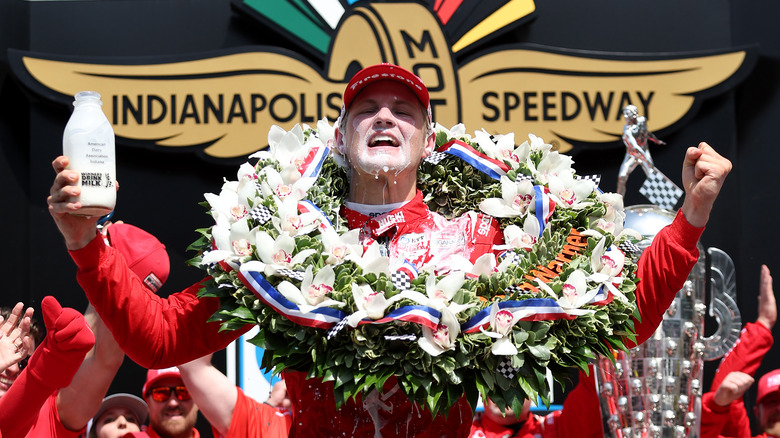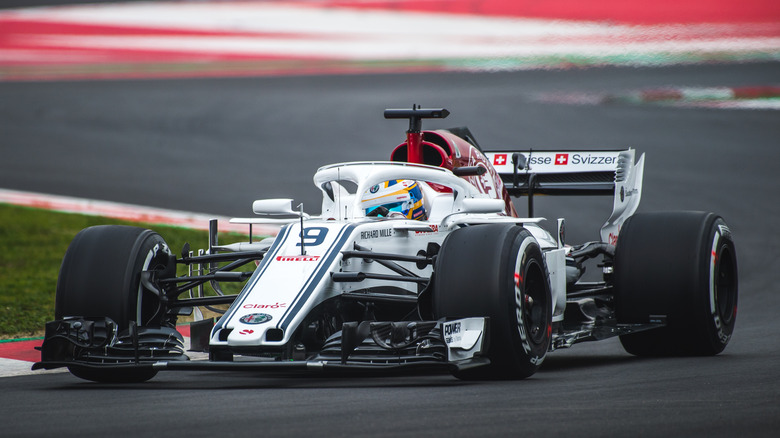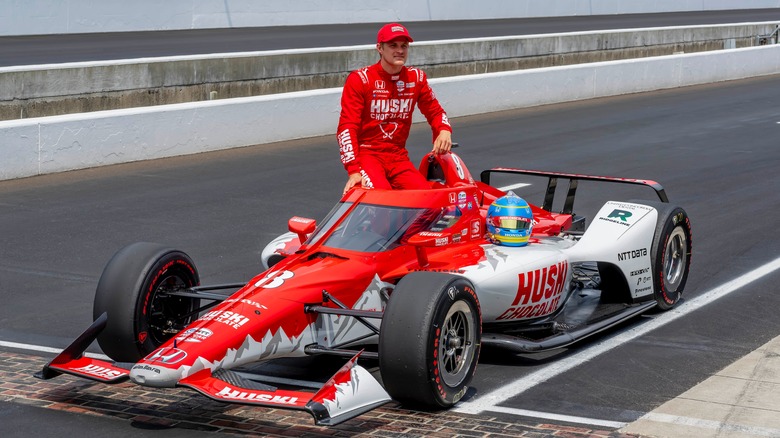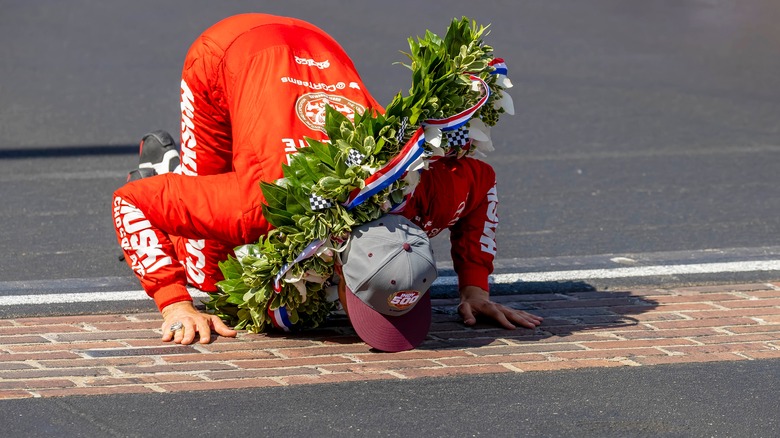How Marcus Ericsson's Life Will Change After Winning The Indy 500
The Indianapolis 500 – or simply Indy 500 – is known by some as "the greatest spectacle in racing." This hundred-year-old race lasts for 500 miles — 200 laps around the 2.5-mile oval Indianapolis Motor Speedway racetrack — for a total of around three grueling hours of turning left. The excessive repetition around the same track can be mind-numbing and often challenges drivers in a way hardly any other racing event does. In the latest edition of the Indy 500, 31-year-old Swede Marcus Ericsson became the 74th winner of the event despite a late start and an impeding red flag.
Ericsson bagged a record $3.01 million reward for winning the 2022 Indy 500 event: the highest prize to ever be earned by an Indianapolis 500 winner and worth the combined earnings of the last two winners, according to Indy Star. Pato O'Ward, the runner-up of the race, received a $1 million check, which is also the highest collected by a runner-up in more than ten years. The race organizers collected a total purse of more than $16 million, thanks to more than 325,000 people occupying the stands at the Indianapolis Motor Speedway. This was the highest turnout for any single-day sports event since the onset of COVID-19.
From a rocky F1 career to team's first win in 10 years
Besides several firsts for the racing event, it was also a first for the winning driver. Before starting his journey with the IndyCar racing series, Ericsson tried his luck at Formula 1 for five years but remained unsuccessful through 97 races. In 2019, he joined the Schmidt Peterson Motorsport team, headed by Indy 500 icon Sam Schmidt, as a rookie. However, Ericsson was let go when McLaren bought 75% of the team's stakes in 2020 and renamed it Arrow McLaren SP.
The same year, Ericsson joined the Chip Ganassi Racing team. He got the Swedish chocolate company Huski Chocolate as a sponsor for the number 8 car that he drove to victory at the 2020 Indy 500. Ericsson spent the following two years training and repairing the lost confidence over his winless seasons in F1.
This is the fifth Indy 500 win for the Chip Ganassi team and the first in almost a decade. Along with Ericsson, the team for the event comprises Scott Dixon, who has six IndyCar victories to his name, and Álex Palou, who finished the last season at the top of the points table. Also on the team are Jimmie Johnson, who has seven NASCAR wins to his name and is trying his hand at the open-wheel format without a full-time obligation with the team, and the 47-year-old Tony Kanaan, who has been participating in the IndyCar series for the last 20 years.
Better machinery at Chip Ganassi improved winning odds
Ericsson's teammates Dixon and Palou also had good chances of winning but did not fare very well in terms of luck. On his way in for a pit stop, Paulo found himself stuck on the pit road after a caution flag went up. This delay eliminated his chances of a victory while Dixon, who was leading for a significant part of the race, earned a penalty for speeding during a pit stop, decreasing his chances of winning in the process.
On the other hand, Ericsson was focused on the long-term during most of the race. "I was running in fourth for the first 100 laps, protecting my racecar, looking after my tires, saving fuel, and keeping the car balanced with the tools," Ericsson was quoted saying by Autosport. The Swede also said he planned to sit on the fourth or fifth position for the first 130 or so laps and then speed his way upward. "I didn't lift in the last 20 laps, including the last two laps," said Ericsson. "In my mind, I was not going to lift for anything!"
A pay driver no longer
With the Indy 500 being a double-point race, his win catapulted Ericsson straight from the eight to the first position in the points tally for the 2022 IndyCar season. This is a little difficult to believe because last year, he did not seize his first victory in the series until June 2021. Not only his first in the IndyCar series, but it was also Ericsson's first victory since the beginning of his racing career at F1 eight years ago, GrandPrix247 notes.
While the victory helped Ericsson earn a sizeable amount of money, it was significantly important for his morale. Since his F1 days, Ericsson has been labeled a "pay driver," a term for someone who doesn't win prize money from races and brings in his own sponsors or family money to buy a position in the team. That was a stereotype Ericsson has had to fight because of his lackluster performance in F1, which Crash suggests was largely due to "underperforming machinery."
With 11 more races to go in the season, it will surely be a turning point in Marcus Ericsson's life if he can maintain the lead. Even if not, his quashing of the cynicism directed towards him before the win should give him a more respectable position in race history from this point forward.



